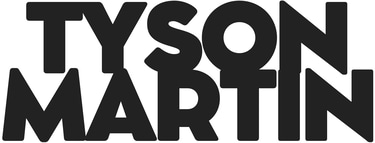Security as Culture, Not Control: Building Buy-in Across the Business
Security used to be someone else’s job. It was a team, a department, a checklist. But in today’s digital world, that model no longer works.


Security as Culture, Not Control: Building Buy-in Across the Business
Security used to be someone else’s job. It was a team, a department, a checklist. But in today’s digital world, that model no longer works.
Cyber risk is now a shared concern across every layer of the business. From frontline employees to product designers to the boardroom, security touches everything — and everyone. The organizations that thrive are the ones that make security part of how people think and work, not just what they’re told to comply with.
This is the mindset shift from control to culture. And it doesn’t happen by accident.
Culture Is the Greatest Control
Let’s start with a truth: No matter how strong your controls are, they can be undermined by a single action from an unaware or unengaged employee.
Security culture isn’t about fear or force. It’s about creating a shared understanding of what matters and why. It’s about enabling people to make smarter, safer decisions in real time.
Culture is what people do when no one is watching. That’s why building security into culture is more powerful than any tool or policy. It scales trust. It amplifies resilience.
Start with Belief, Not Just Behavior
Changing security culture isn’t just about getting people to follow rules. It’s about helping them believe that security matters to their role, their goals, and the company’s mission.
People don’t resist security because they’re careless. They resist it when it feels irrelevant, punitive, or disconnected from their priorities.
As leaders, our job is to:
Connect security to the organization’s values
Translate risks into real-world consequences
Show how security enables performance, not restricts it
Start by helping teams see security as something that protects their work, not polices it.
Leadership Sets the Tone
Security culture is downstream from leadership behavior. If executives see security as a checkbox or a blocker, the rest of the organization will follow suit.
Leaders must model secure behavior:
Participate in awareness campaigns
Ask thoughtful questions about risk during planning
Treat security reviews as strategic, not bureaucratic
Own and communicate breach response scenarios
When leadership takes security seriously, it legitimizes the message at every level.
Make Security Part of the Employee Experience
To embed security into culture, it has to show up in the moments that matter:
Onboarding: Introduce new hires to your security ethos from day one. Make it part of the brand.
Development: Provide ongoing training that is relevant, engaging, and role-specific. Avoid one-size-fits-all modules.
Performance: Recognize and reward secure behavior. Tie it to performance conversations and team OKRs.
Celebration: Share stories of employees who caught phishing attempts or championed better data handling. Make heroes out of security advocates.
These moments add up. They tell people that security isn’t just a slide deck — it’s how we work together.
Speak in the Language of the Business
Security leaders often lose buy-in by speaking in acronyms, threats, and technical depth.
To build a culture of security, speak in the language of:
Risk and opportunity
Trust and brand equity
Customer loyalty
Speed and scale
For example:
Instead of "We need to deploy DLP," say "We want to protect our customers' trust by preventing sensitive data leaks."
Instead of "We’re updating our IAM policy," say "We’re making it easier and safer for the right people to access the right tools."
Clarity builds buy-in. Context builds urgency.
Build Cross-Functional Security Champions
Security doesn’t scale if it stays in one department.
Create a network of champions across:
Product and Engineering
HR and Legal
Sales and Marketing
Customer Experience
These champions help:
Translate security into team priorities
Spot emerging risks early
Co-design solutions that fit team workflows
Act as peer influencers
Equip them with context, resources, and recognition. Let them lead from within.
Embed Security into Workflows, Not Afterthoughts
To make security cultural, integrate it into how work gets done. That means:
Embedding security checks into agile sprints and product roadmaps
Automating controls within tools people already use (e.g., version control, chat, CRM)
Including security criteria in vendor selection and procurement
Making secure practices default, not discretionary
The easier you make it to do the secure thing, the more consistently it happens.
Tell Stories That Matter
Facts inform, but stories inspire.
Use internal stories to bring security to life:
"Because we spotted that phishing email, we avoided a wire transfer scam."
"By flagging that cloud misconfiguration, we protected customer data."
"A simple role review helped a team member avoid exposing sensitive IP."
These stories help people see themselves in the security journey. They shift the mindset from compliance to care.
Measure Culture, Not Just Controls
If you want to improve security culture, measure it like you mean it.
Track:
Security training participation and engagement
Awareness campaign reach and feedback
Behavior changes (e.g., MFA adoption, reporting of suspicious activity)
Employee surveys on security confidence and relevance
Look beyond audit readiness. Ask: Are people thinking differently?
Final Thoughts: Culture Is Everyone’s Job
Security culture isn’t built with policies. It’s built with people.
It comes from how we talk about trust. How we design processes. How we support each other in doing the right thing.
The CISO may lead the strategy, but every leader influences the outcome. Every team sets the tone. Every employee plays a part.
When security becomes cultural, it stops being a barrier. It becomes a brand value, a business enabler, and a shared source of pride.
That’s the shift from control to culture. And that’s where true resilience begins.
About the Author
Tyson Martin is a digital trust and cybersecurity executive who helps organizations build cultures of security that scale. He writes about leadership, resilience, and turning compliance into confidence.
